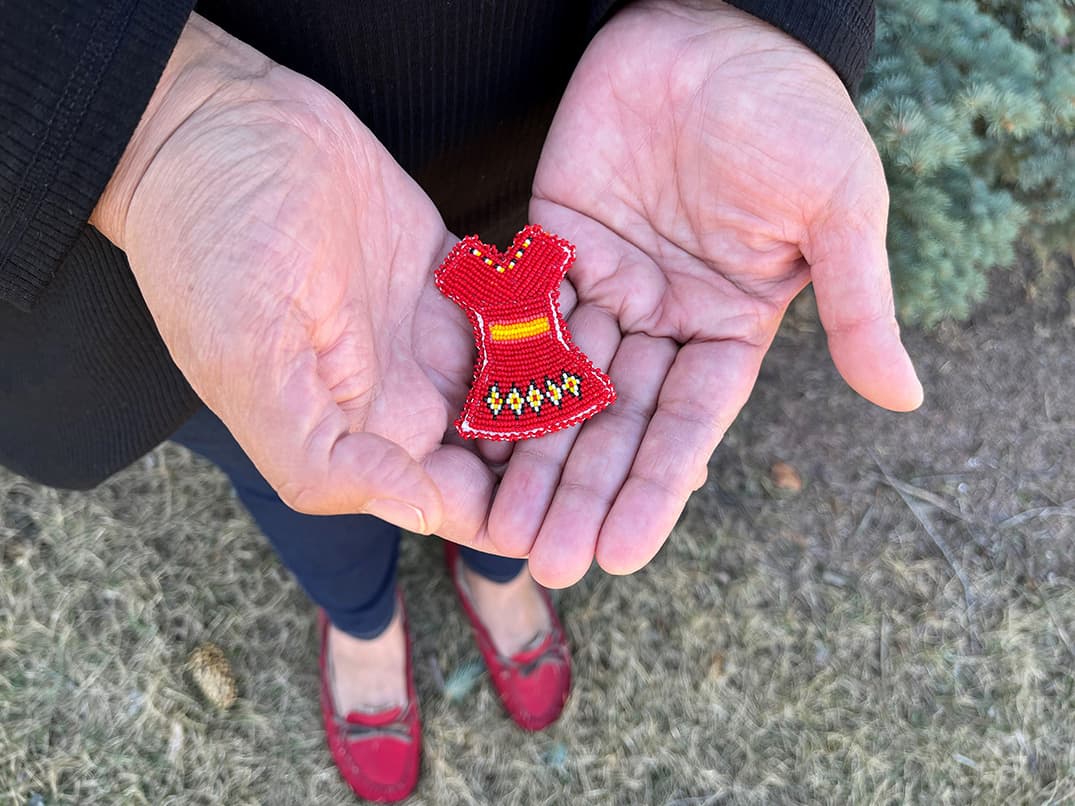Also known as Red Dress Day, May 5 marks a day to honour, remember and create awareness and action for Missing, Murdered and Exploited Indigenous Peoples (MMEIP) in Canada. The statistics are startling —Indigenous women in Canada today are seven times more likely than non-Indigenous women to be a murder victim, and three times more likely to be violently or sexually assaulted.
Lana, originally from Cowessess First Nation in Saskatchewan, and Joy, from the Athabasca Chipewyan First Nation in Alberta, are part of Suncor’s Indigenous and Community Relations team in Fort McMurray, Alta. They both agree that more action is needed to end the MMEIP crisis.
“Since the time of residential schools and everything leading to today, we’ve been stripped of our names, our languages, our hair. To be able to take back our power and voice, we need to keep speaking out against what is happening,” says Joy. “There are so many Indigenous people who’ve gone missing or have been murdered in our own city. We need to continue to say their names. They are important to somebody. We can all play a role in ending the violence.”
One of the national organizations helping to move the needle with this progress is the Native Women’s Association of Canada (NWAC). For almost 50 years NWAC has played a lead role in advocating for the rights of Indigenous women, girls, two-spirit, transgender and gender-diverse people, which includes critical advocacy on Missing and Murdered Indigenous Women and Girls (MMIWG2S+) and reconciliation. The organization has been pressing the federal government to act since the National Inquiry issued the 231 Calls for Justice in 2019.
When reflecting on Red Dress Day, NWAC urges Canadians to consider the many aspects of colonization that continue to affect Indigenous people. NWAC’s Chief Executive Officer, Lynne Groulx, believes that a critical component to reconciliation is acknowledging the past.
“We invite everyone across the country to play an active role in reconciliation through education and raising awareness, as well as learning about Indigenous knowledge systems and the impacts of colonialism and racism that face many Indigenous people,” says Lynne. “We have taken urgent and significant action to increase awareness and address the 231 Calls for Justice and have been working hard to implement our own MMIWG2S+ Action Plan.”
NWAC’s Action Plan includes 66 concrete actions they will take to help end the MMEIP. Last year NWAC reported progress on over 85 per cent of the proposed actions. This includes the Safe Passage Platform – a national reporting tool that maps cases of MMIWG2S+ and provides information on resources and services available across the country.
Lynne also suggests reading books, listening to podcasts or participating in educational programs created by Indigenous authors and media to see the world through their lens. She also encourages people to help amplify messages and initiatives from Indigenous voices to ensure they are being heard.
On May 5 and beyond, both Lana and Joy will be found honouring and remembering – the missing, murdered and exploited Indigenous peoples – in their own way of healing and active support.
“Through my mom’s experience growing up of being called a dirty Indian, to now my 15-year-old daughter who is able to stand proud and march to the beat of her own drum, we can see there has been a lot of progress for Indigenous people to feel seen and accepted,” says Lana. “But we also must acknowledge the pain and trauma that is still prevalent today. We are not victims, we are survivors.”



.png?mw=304&modified=20211004163151&hash=E7F92BED71D5DA90C44EFCEF3D1AEE6C)

